 (Å)
(Å)



The F25SRF2 filter with the FUV-MAMA provides high-throughput broad-band far-UV imaging with better rejection of geocoronal emission than the F25MAMA but worse than F25QTZ modes. It provides the same field of view and spatial resolution as these modes.
This filter has slightly higher throughput than F25QTZ, but lets in geocoronal OI 1302 Å. For sky-limited imaging F25QTZ is usually a better choice.
Sky background on the day side of the orbit contains a significant contributions from OI air glow emission at 1356 Å and at 1302 Å. In high-background conditions, the sky background can dominate the detector background. In average day-side observing conditions the sky background through this filter will be about a factor of 100 higher than for F25QTZ. Observers can limit the background (with some cost to the total amount of observing time per orbit) by using the DARKTIME special requirement.
Users may also want to consider whether the ACS SBC detector might be better for their observing program.
| Pivot  (Å) (Å) |
FWHM (Å) |
AB mag zeropoint |
Speak |
B  |
R80 (arcsec) |
Flux in central pixel |
|---|---|---|---|---|---|---|
| 1457.4 |
283.7 |
22.825 |
8.67e+13 |
303.5 |
0.30 |
9% |
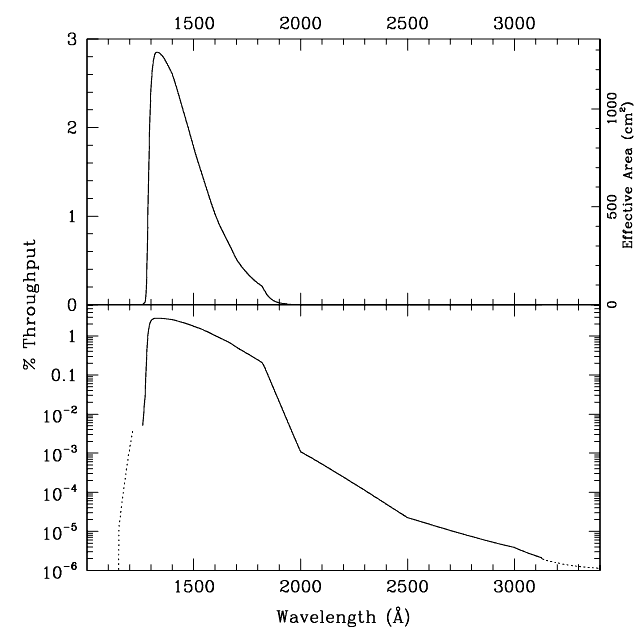
 for the F25SRF2 FUV-MAMA mode. Curves are labeled by required exposure time (sec).
for the F25SRF2 FUV-MAMA mode. Curves are labeled by required exposure time (sec).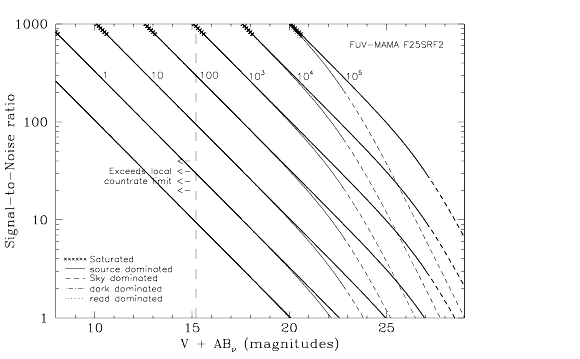
 for the F25SRF2 FUV-MAMA mode. Top curves are for an area of 0.2 arcsec2; bottom curves are for 1 arcsec2. Average sky assumed. Curves are labeled by required exposure time (sec).
for the F25SRF2 FUV-MAMA mode. Top curves are for an area of 0.2 arcsec2; bottom curves are for 1 arcsec2. Average sky assumed. Curves are labeled by required exposure time (sec).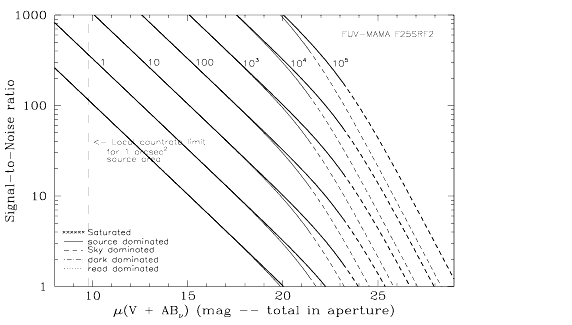
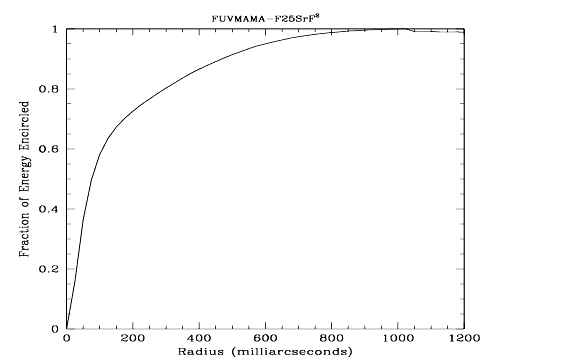
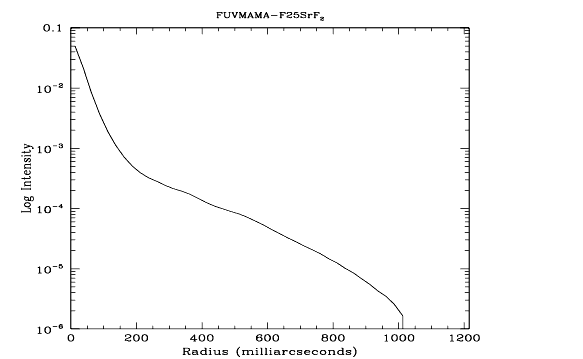


|
Space Telescope Science Institute http://www.stsci.edu Voice: (410) 338-1082 help@stsci.edu |